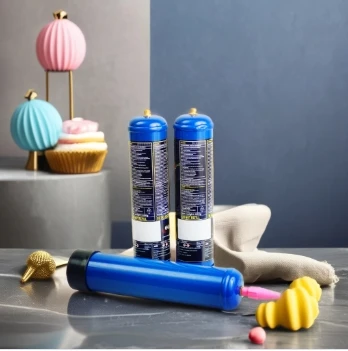
Whipped cream is a popular topping that makes desserts, fruits, and drinks more delicious. Usually, whipped cream is made by beating heavy cream until it becomes fluffy and light. But have you ever thought if you can get the same effect using milk in a whipped cream dispenser ? Let's look into this interesting question and see how and if we can make whipped cream with milk. How is Whipped Cream Usually Made? Traditionally, whipped cream is made using heavy cream, also known as heavy whipping cream, which is the primary ingredient used to make whipped cream. Its high-fat content (usually around 36%-40%) is crucial for achieving a light and airy texture and stability when whipped. Using milk on its own doesn't have enough fat content (around 3%) to create stable whipped cream using a dispenser like the ones designed for heavy cream. The high-fat content (around 36%) in heavy cream traps air bubbles, resulting in that delightful lightness. Can Milk Substitute for Heavy Cream? This less fat in the milk makes it hard to whip milk into a smooth texture like regular whipped cream. You can whip milk with a whipped cream dispenser , but the outcome may not be as good. What Are the Challenges When You Make Whipped Cream With Milk? Fat Content: The low-fat content in milk means there's less fat available to stabilize the air bubbles formed during whipping. As a result, whipped milk is unlikely to achieve the same fluffy texture and stability as whipped cream made with heavy cream. Texture and Flavour: Whipped milk may have a thinner texture and lack the richness and flavor of traditional whipped cream. Without sufficient fat, the whipped product may also be prone to deflating quickly. Experimenting with Milk in a Nitrous Whipped Cream Dispenser While milk may not be the ideal choice for making whipped cream, some adventurous home cooks have experimented with using milk in whipped cream dispensers. Results vary depending on factors such as the type of milk used, the dispenser's pressure, and the duration of whipping. Using milk as a heavy cream substitute can be challenging BUT! There are ways that you can still utilize milk in your whipped cream creations! If you add a few simple ingredients to your whipped cream dispenser, you may be able to make whipped cream with milk.
